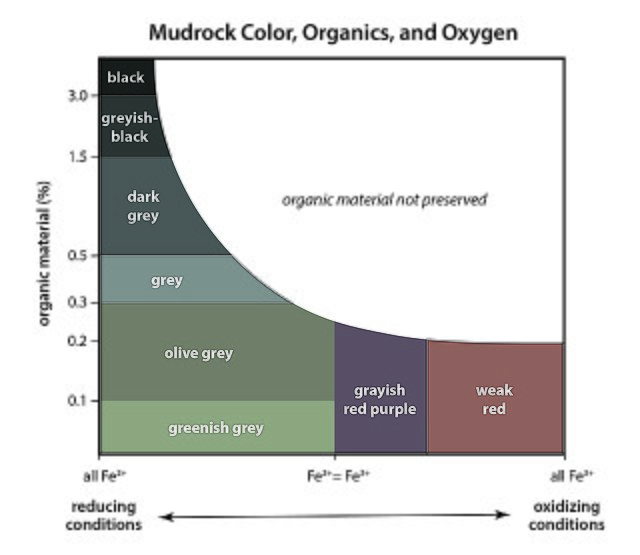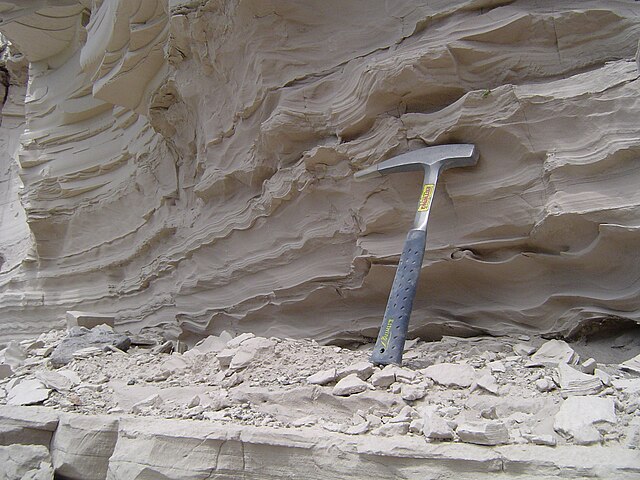Shale is a fine-grained, clastic sedimentary rock formed from mud that is a mix of flakes of clay minerals (hydrous aluminium phyllosilicates, e.g. kaolin, Al2Si2O5(OH)4) and tiny fragments (silt-sized particles) of other minerals, especially quartz and calcite. Shale is characterized by its tendency to split into thin layers (laminae) less than one centimeter in thickness. This property is called fissility. Shale is the most common sedimentary rock.
Shale
Sample of drill cuttings of shale while drilling an oil well in Louisiana, United States. Sand grain = 2 mm in diameter
Color chart for shale based on oxidation state and organic carbon content
Shale in Potokgraben, the Karawanks, Austria
Clastic rocks are composed of fragments, or clasts, of pre-existing minerals and rock. A clast is a fragment of geological detritus, chunks, and smaller grains of rock broken off other rocks by physical weathering. Geologists use the term clastic to refer to sedimentary rocks and particles in sediment transport, whether in suspension or as bed load, and in sediment deposits.
A thin section of a clast (sand grain), derived from a basalt scoria. Vesicles (air bubbles) can be seen throughout the clast. Plane light above, cross-polarized light below. Scale box is 0.25 mm.
Claystone from Montana
Conglomerate
Breccia. Notice the angular nature of the large clasts








